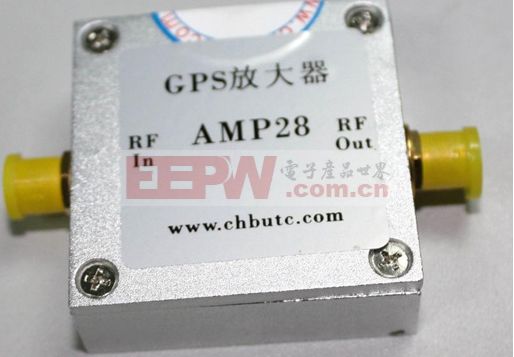Guide: Amplifier  . As the name suggests, it's a device used to boost signals. In this article, we’ll dive into what an amplifier is and how it works—let’s take a closer look at the basics of amplification!
. As the name suggests, it's a device used to boost signals. In this article, we’ll dive into what an amplifier is and how it works—let’s take a closer look at the basics of amplification!
Amplifier  Principle – Introduction
Principle – Introduction
An amplifier  is a device that increases the amplitude or power of a signal. It typically consists of components like transistors, tubes, or integrated circuits, along with other electrical elements. Amplifiers play a crucial role in signal processing across various electronic systems.
is a device that increases the amplitude or power of a signal. It typically consists of components like transistors, tubes, or integrated circuits, along with other electrical elements. Amplifiers play a crucial role in signal processing across various electronic systems.
The basic idea behind amplification is using an input signal to control an energy source, which provides the necessary power for the amplification process. For linear amplifiers  , the output is a scaled-up version of the input. In contrast, non-linear amplifiers
, the output is a scaled-up version of the input. In contrast, non-linear amplifiers  produce outputs that are related to the input through some functional relationship.
produce outputs that are related to the input through some functional relationship.

2. Amplifier  Principle – Power Amplifier
Principle – Power Amplifier
A high-frequency power amplifier  is designed to convert DC energy from a power supply into a high-frequency AC signal. This type of amplifier is often used in the final stage of a transmitter to amplify modulated signals.
is designed to convert DC energy from a power supply into a high-frequency AC signal. This type of amplifier is often used in the final stage of a transmitter to amplify modulated signals.
Power amplifiers can be classified based on the conduction angle of the current. The most common types are Class A, B, and C. Most high-frequency power amplifiers  operate in Class C due to their efficiency.
operate in Class C due to their efficiency.
Class A amplifier  has a conduction angle of 360 degrees, making it ideal for low-power signal amplification. However, it tends to be less efficient due to continuous current flow.
has a conduction angle of 360 degrees, making it ideal for low-power signal amplification. However, it tends to be less efficient due to continuous current flow.

In a Class A amplifier  , the static bias current is set relatively high to ensure the entire signal cycle is amplified without distortion. However, this results in higher power consumption and heat generation.
, the static bias current is set relatively high to ensure the entire signal cycle is amplified without distortion. However, this results in higher power consumption and heat generation.
Class B amplifier  has a conduction angle of approximately 180 degrees. It uses two transistors to amplify the positive and negative halves of the signal separately, reducing power loss compared to Class A.
has a conduction angle of approximately 180 degrees. It uses two transistors to amplify the positive and negative halves of the signal separately, reducing power loss compared to Class A.

Class AB amplifier  combines the best of both worlds, offering reduced distortion and improved efficiency. It allows a small amount of current to flow even when no signal is present, avoiding crossover distortion.
combines the best of both worlds, offering reduced distortion and improved efficiency. It allows a small amount of current to flow even when no signal is present, avoiding crossover distortion.
Class C amplifier  operates with a conduction angle of less than 180 degrees. While it introduces significant waveform distortion, it is highly efficient and is commonly used in radio frequency applications with tuned circuits to filter out unwanted harmonics.
operates with a conduction angle of less than 180 degrees. While it introduces significant waveform distortion, it is highly efficient and is commonly used in radio frequency applications with tuned circuits to filter out unwanted harmonics.

3. Amplifier  Principle – Operational Amplifier
Principle – Operational Amplifier
An operational amplifier  has two inputs—a non-inverting input (+) and an inverting input (−)—and one output. The output voltage is proportional to the difference between the two input voltages.
has two inputs—a non-inverting input (+) and an inverting input (−)—and one output. The output voltage is proportional to the difference between the two input voltages.

When a voltage is applied to the inverting input, the output voltage changes in the opposite direction. Conversely, if the voltage is applied to the non-inverting input, the output follows the same direction as the input. This makes op-amps versatile for a wide range of applications, such as filtering, signal conditioning, and more.
Operational amplifiers  are widely used in audio, industrial control, and communication systems. They are also essential in creating inverting and non-inverting amplifier configurations.
are widely used in audio, industrial control, and communication systems. They are also essential in creating inverting and non-inverting amplifier configurations.

Understanding the principles of amplifiers is key to designing and troubleshooting electronic circuits. Whether you're working with power amplifiers, operational amplifiers, or specialized types, each plays a unique role in signal processing and system performance.
Expand reading:
- 1. In-depth understanding of the differential amplifier

- 2. These operational amplifiers
 Did you notice the knowledge?
Did you notice the knowledge? - 3. Various amplifiers
 Comparison
Comparison
Electronic tube
Battery connector,battery holder,battery holder spring,power connector,connector
Dongguan Yiyou Electronic Technology Co., Ltd. , https://www.dsubminiature.com